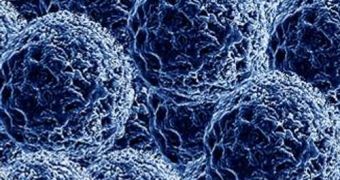Researchers investigating the field of drug addiction may have just developed a new method of counteracting people's need for these substances. Rather than addressing the symptoms generated by the lack of the drug, or trying to replace it with something less harmful, the team from the University of Buffalo (UB)'s Institute for Lasers, Photonics and Biophotonics and UB's Department of Medicine has decided to try a more straightforward approach.
They want to devise a way of delivering nanoparticles directly to the portion of the brain that makes individuals crave for the thing they are addicted to. These microscopic particles will be laden with RNA strands, which will attack the very genes that trigger the desire for alcohol, tobacco, or other drugs. The genes will be turned off, or “silenced,” and so the body will think that it doesn't need or want the substance anymore. There will, of course, be after-effects, just like when quiting drugs the old-fashioned way, but, at a psychological level, patients will find it a lot easier to give up the habit than ever before.
“These findings mean that in the future, we might be able to add a powerful pharmaceutical agent to the current arsenal of weapons in order to more effectively fight a whole range of substance addictions,” the leader of the research team, Paras N. Prasad, PhD, who is the SUNY distinguished professor in the departments of Chemistry, Physics, Electrical Engineering and Medicine, explains. Prasad is also the UB Institute for Lasers, Photonics and Biophotonics executive director.
“The findings of this study tell us that these nanoparticles are both a safe and very efficient way of delivering to a variety of tissues highly sophisticated new drugs that turn off abnormal genes,” the co-author of the new paper, UB departments of Medicine, Pediatrics and Microbiology professor Stanley A. Schwartz, M.D., PhD, who is also the director of the Division of Allergy, Immunology and Rheumatology at the University, adds.
“When you silence this gene [DARPP-32], the physical craving for the drug should be reduced,” post-doctoral researcher Adela C. Boniou, PhD, who has also been a co-author of the paper, underlines. “What is unique here is that we have applied nanotechnology to therapeutic concepts directed at silencing a gene in the brain, using RNA techniques,” research assistant Supriya D. Mahajan, PhD, concludes. The study detailing the finds has been published during the week of March 23rd in the journal Proceedings of the National Academy of Sciences (PNAS).

 14 DAY TRIAL //
14 DAY TRIAL //